To really understand London and the lives of Londoners, we need to look outside the city to see how London has influenced the development of so many other places, one prime example being Southend on Sea.
Southend on Sea is on the Thames Estuary, not quite the open sea, and very different to the river that passes through London.
The first settlement around Southend was to the north of the town at Prittlewell, probably dating from the 6th or 7th centuries.
There was gradual development over the centuries, but from the late 18th century development dramatically increased and Southend on Sea became a major seaside resort of the 19th and earlier 20th centuries.
Passenger ships from the heart of the City would ferry day visitors to Southend, and with the opening of two rail lines (Fenchurch Street to Southend Central in 1856 and Liverpool Street to Southend Victoria in 1889), large numbers of Londoners would make their way to experience a day on the coast and to walk along the pier.
Southend is only Southend because of London.
As this is a Bank Holiday weekend, it seemed appropriate to join the thousands of Londoners who have made the same journey over the years and take a trip out to Southend on Sea.
The above photo shows crowds streaming up Pier Hill. This leads from the pier and the parade along the sea front, up to the high street and the stations. It was probably taken towards the end of the day when day trippers were heading back to the stations for their journey back into London.
The Southend Standard from August 1910 provides a wonderful description of Southend on an August Bank Holiday:
“HOW SOUTHEND SPENT BANK HOLIDAY – Last year Bank Holiday was cold and wet, and holiday makers had a good deal of their enjoyment marred by cold winds and frequent showers. This year however, the Clerk of Weather changed his mind for once, and was in his most genial mood.
The sun shone from early morn to dewy eve; his somewhat warm attentions being tempered by a cool and steady breeze. Very early in the morning the incoming excursion trains began to unload their human cargoes; the railway stations, like gigantic hearts, beat at regular intervals and sent the human tides flowing outwards, to disperse themselves along the various arteries and veins of the town.
Such crowds there were too; everyone in their holiday rig; artisans and their wives, the poorer class of clerks, ‘Arry in fearsome ties, the latest cut of trousers, and bowler or straw hat stuck jauntily on one side; ‘Arriet in all the glory of purple velveteen, brown boots and large hat with sweeping ostrich feather; everybody and his uncle as the saying goes, was in the crowd that ceaselessly passed down the high street and spread itself along the front. By midday, the Parade was a sight worth seeing; right away from Westcliffe to Luna Park, the great mass of holiday making humanity moved to and fro and back again, like the tides of the estuary, merry laughter, jokes and greetings were everywhere. But it was down along the east front, in the afternoon that the holiday crowd was seen at its best, there the genus tripper was present in every variety.
The stalls which purveyed fearsome and wonderfully made American drinks did a roaring trade. Every fruit shop was the centre of a knot of customers and even the establishment whose claim to attention lay in the handing out of frizzling hot sausages and steaming mashed potatoes did a brisk trade.
From the shops at the commencement of the Parade to the gasworks every place did a roaring trade, they might have been huge magnets and the coins in the pockets of those outside made of steel, so quickly did the later pass over the counters, and from hand to hand.
The spaces of beach and sand which were left vacant were filled with hundreds of children and grown-ups, who sat about and enjoyed themselves to the full. In the pools left by the residing tide the youngsters had great sport, and with pail and spade and tucked-up clothes, splashed and dug to their hearts contents.
‘Arries and ‘Arriets, regardless of the dust and the heat, danced round piano organs in the East End style, which is only born and cannot be taught.
By six o’clock in the evening the human tides begin to return to the railway stations and crowd the trains again. Much singing and dancing was there, not quite so clear and steady as in the morning, but nevertheless all good humoured.”
The train companies would arrange special excursion trains from London to Southend for Bank Holiday weekends, and newspapers in advance of the weekend would carry advertisements detailing the times and prices for those wanting to leave the city for a day by the sea. Very different to today, where the Bank Holiday is often a time for closures and engineering works, rather than special trains heading to the coast.
Southend Pier has long been a central feature of a day by the sea. The original pier opened in 1830, and the iron pier that we can walk along today followed in 1889. The end of the pier was extended several times with the Prince George Extension opened in 1929 bringing the length of the pier to 1.34 miles.
The pier railway was opened in 1890, reaching the end of the pier in 1891.
In the following years, Southend Pier has been hit by ships and suffered a number of fires. At times it seemed that the pier would not be restored and might even be closed, but somehow it has continued to stay open, a train still runs the length of the pier, and the buildings at the pier-head have been restored.
Time for a Bank Holiday walk along the pier:
Once you start walking along the pier, the beauty of the estuary sky becomes apparent. The land on either side of the estuary almost blends with the water, and the wide open sky stretches from horizon to horizon.
Distance markers tell you how far along the pier you have walked – and how far you still have to go.
The Southend Pier Railway still runs the length of the pier.
The first 1830 version of the pier included a horse-drawn tramway, however this was replaced by an electric tramway in 1890 soon after completion of the iron pier.
There have been a number of different versions of the pier train over the years – this is the first version I remember, with the bowling alley in the background which once was the main building over the start of the pier.
Conditions on a warm August day are very different to the wind and rain the pier has to endure, sticking over a mile out into a flat estuary with no protection from everything that the weather can throw at the pier.
The pier therefore needs constant maintenance. Replacement of the wooden boards lining the walkway, painting of the railings, replacement and restoration of the iron supports of the pier.
Looking back along the pier from alongside the station at the pier-head.
End of the pier station and estuary sky.
Colour at the end of the pier.
The pier did comprise upper and lower decks at the pier-head. The lower decks are now closed off.
Pier head:
Looking back at the pier head:
The following photo from the Britain from Above archive is titled “The Royal Eagle Paddle Steamer alongside Southend Pier, Southend-on-Sea, from the south-east, 1939”
Note the two decks along the pier head, and the crowds of people on the pier and the ship.
The Royal Eagle ran regular day trips from the centre of London out to Southend, Margate and Ramsgate.
A typical advert for the service from May 1933 read:
“London’s Luxury Liners – Commencing 3rd June Daily (Fridays excepted) Royal Eagle for Southend, Margate & Ramsgate from Tower Pier at 9.20 a.m. Greenwich 9.50, North Woolwich 10.20.”
Day return fares during the week to Southend were 4 shillings and 5 shillings on Saturdays, Sundays and Bank Holidays.
If you wanted a slightly longer day at Southend, the Crested Eagle left Tower Pier at 9 a.m.
The mid section of the pier head as it was pre-war. Note also the end of the pier station, with two covered platforms for trains.
The very end of the pier:
The view back along the pier towards Southend from the end of the pier:
From our 2019 viewpoint, it is probably hard to understand just how much a day out at Southend meant to someone living in East London. The ability to escape from the daily pressures of trying to earn enough to feed and house your family must have been essential to make life worth living. Whilst researching through newspapers, I came across the following tragic example from 1921. Hopefully a very rare case, but it does highlight what a day out at Southend meant to an east Londoner:
“TRAGEDY OF BOY’S SUIT IN PAWN – LOSS OF HOLIDAY CAUSES MOTHER’S SUICIDE.
Worried because she could not raise the money necessary to get her boy’s Sunday suit out of pawn so that he could go to Southend on Bank Holiday, Ellen Woolf (44) of Mile End, committed suicide by swallowing carbolic acid.
It was said at the inquest that the woman had had 14 children, of whom eight were living, and the clothes had been pawned during the week in order to get food.
She had also had additional worries over a sick child and debt. The husband served in France during the war, and was badly wounded. Before and since, for over 20 years, he had sold newspapers in Leadenhall-street for a living.
Suicide while of unsound mind was the verdict.”
The verdict should really have drawn attention to the pressures she must have been under, as these must have been the root cause of her state of mind – I will never take a trip to Southend for granted again.
Southend has had to change and adapt to continue to attract visitors who want more that just a walk along the pier or the Parade. As the 1910 report stated, in 2019 it is still about money, and attracting the coin out of the visitors pocket.
On either side of the pier, along the sea front is Adventure Island – a dense cluster of rides and amusements.
The following photo from the Britain from Above archive shows the sunken gardens in 1928, this is the same space as shown in the above photo.
The old Marine Parade, or Golden Mile runs along the sea front to the east of the pier.
This was one of the places to go in the late 1970s with my first car on a Saturday night. Clubs such as Talk of the South (ToTS) were in the buildings on the left and customised cars would spend their time driving up and down the Golden Mile. Southend on a Saturday night was exciting when you are 17.
It was a very different scene in the early years of the 20th century:
Large amusement arcades now line the street:
There have been proposals over the years to demolish and rebuild large parts of the Golden Mile, but they never seem to move beyond the conceptual stage, so Southend’s brightly coloured and gloriously tacky eastern seafront continues into the 21st century.
At the end of the street is the Kursal, now a shadow of its former self.
Opened in 1894 with the main entrance buildings opening in 1901, the Kursal consisted of dining halls, billiard rooms, bars etc. in the main building, with a large fairground covering the land behind.
The Kursal has been through many changes in use and ownership. In 1910 it was renamed the Luna Park, as referenced in the newspaper article at the start of the post. It has been used for greyhound racing and in the 1970s, the main ballroom was a rather good live music venue.
Leaving the seafront and walking up Pier Hill we find this strategically placed souvenir shop:
The shop has been here for as long as I can remember, and it is on the route back to the High Street and train stations from the pier and sea front. Just the place to stop off and buy your last minute souvenir before returning on the train to London.
Southend is not all garish seaside buildings, there is some wonderful historic architecture. At the top of Pier Hill, turning to the west along the cliff top is the Royal Terrace.
At the far end, on the corner with the High Street, is the Royal Hotel and a line of late 18th century houses run along the street with superb views over the pier and estuary.
The terrace was built between 1791 and 1793. The “Royal” name of the terrace was given after the 1803 visit of Princess Caroline (the wife of the Prince Regent), who occupied numbers 7,8 and 9 – the houses in the centre of the photo below.
At the end of the Royal Terrace is the Cliff Lift, providing pedestrians with a route between the sea front and the top of the cliff if they want to avoid the walk.
In 1901, a moving walkway was installed on the site, replaced by the lift which was constructed in 1912.
The lift has undergone several refurbishments and updates since, the most recent being a £3 million upgrade in 2010.
For 50p you can be carried smoothly up to the Royal Terrace:
One final view across the estuary, where sand blends into mud, then water then sky, with a thin sliver of land across in Kent. Hard to believe that this is the the river that flows through central London, now over 4 miles wide between Southend and the Kent coasts.
Southend is only the Southend we see today because of London. A long heritage of being one of the main destinations for Summer weekends and Bank Holidays for those who lived in London.
Easy transport provided by passenger ships on the river and the opening of two railway lines to central London helped bring crowds out of London to spend their money in Southend. In the late 1920s and 1930 a new main road (now the A127) was opened between the Eastern Avenue at Romford and Southend, adding a dual carriageway from east London directly to Southend as visitors started the move from ship and train to car – a trend that would be accelerated in the post war years.
Tastes will continue to change and what people want from a day at the seaside will evolve, but I suspect that Southend will respond as it has done for two hundred years, and develop new ways to, as the 1910 article stated, remove the coin from the pocket of the visitor, but for me it will always be a place to get lost in the wonderful estuary sky.


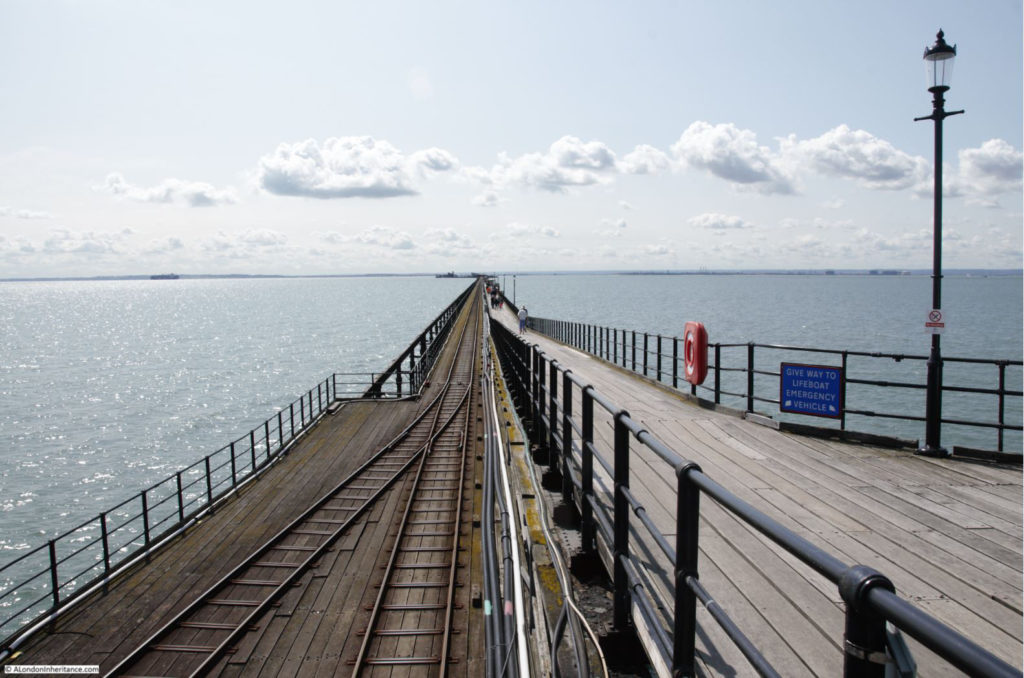

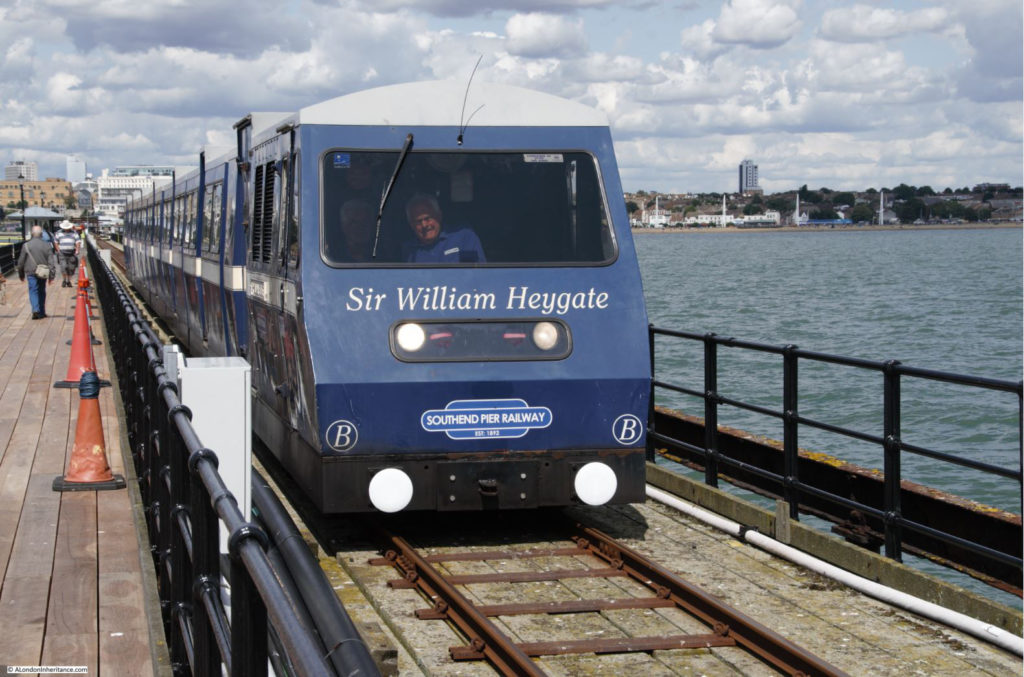

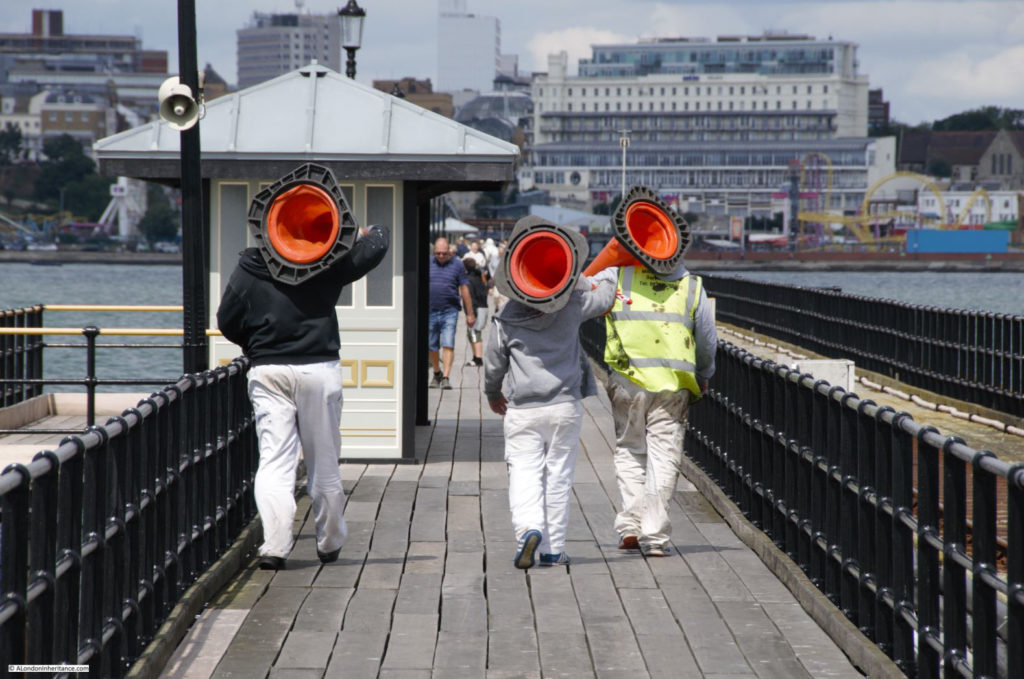
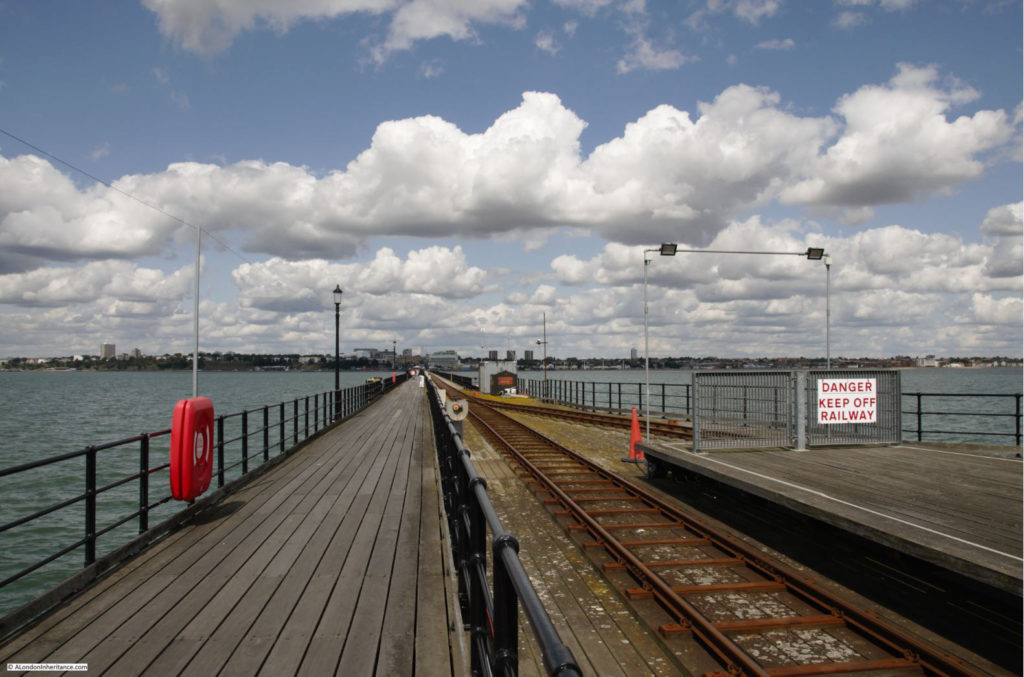

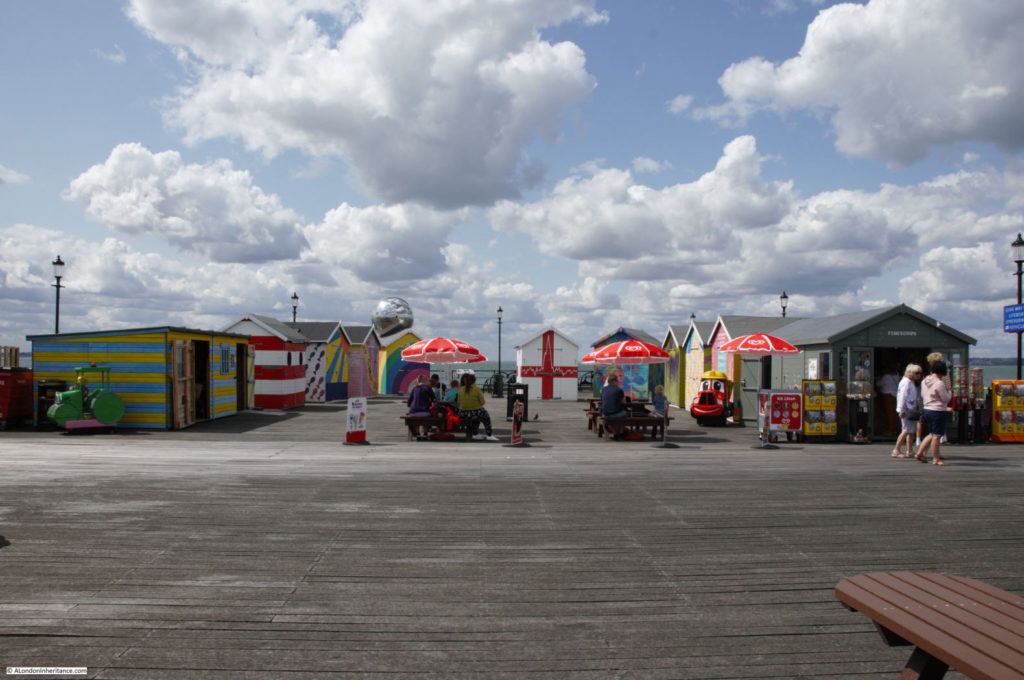


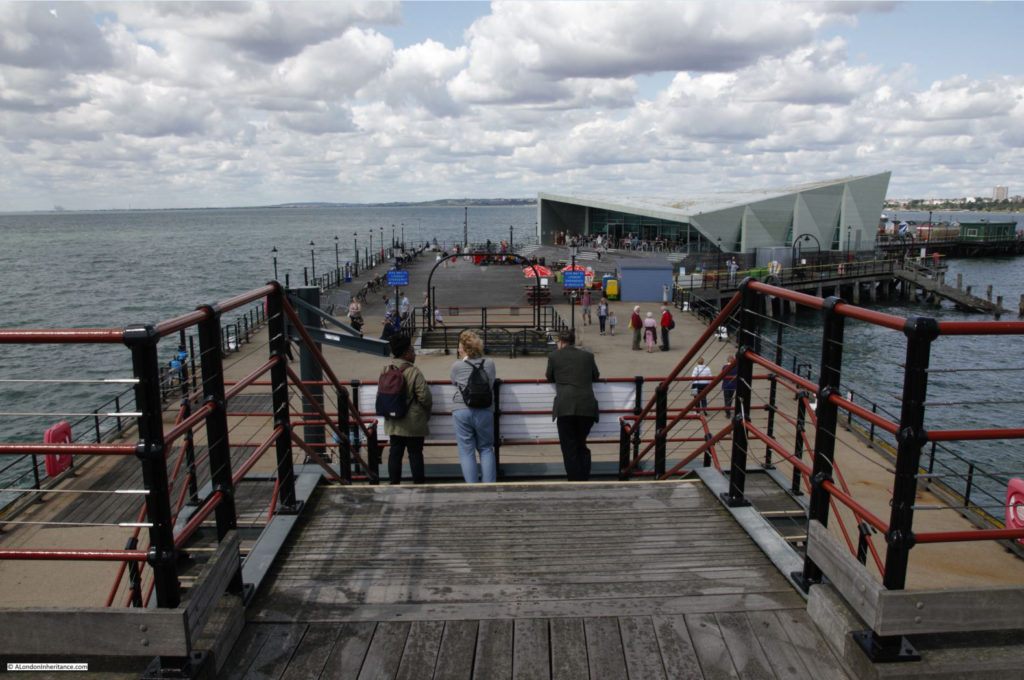
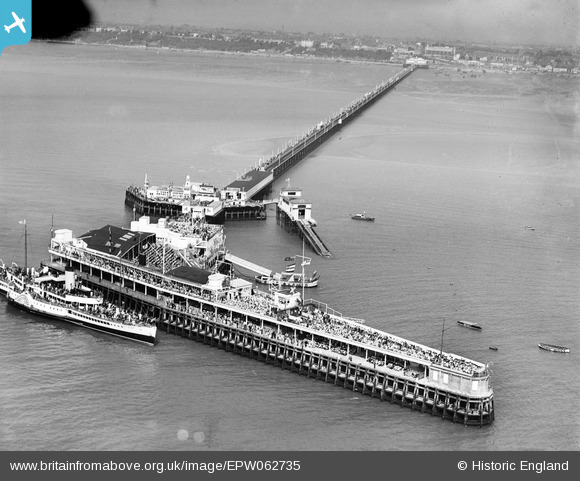
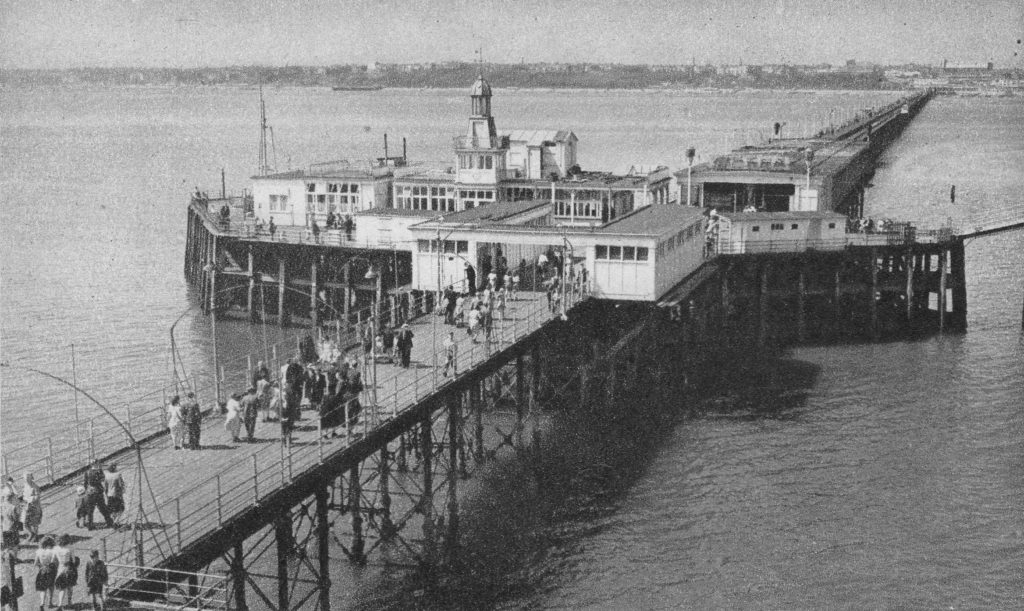
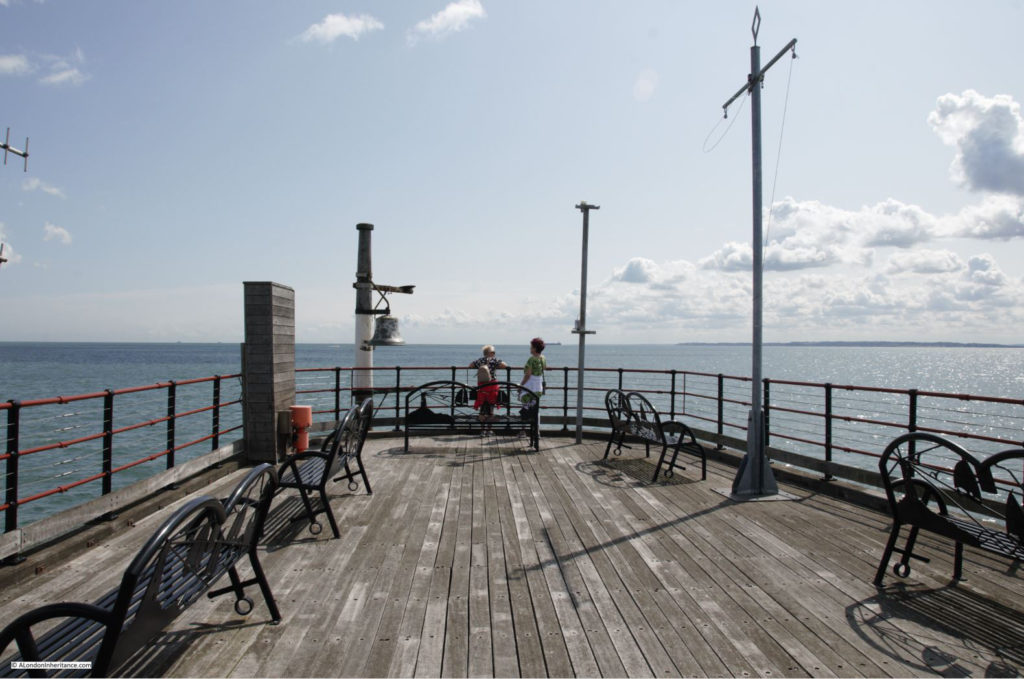
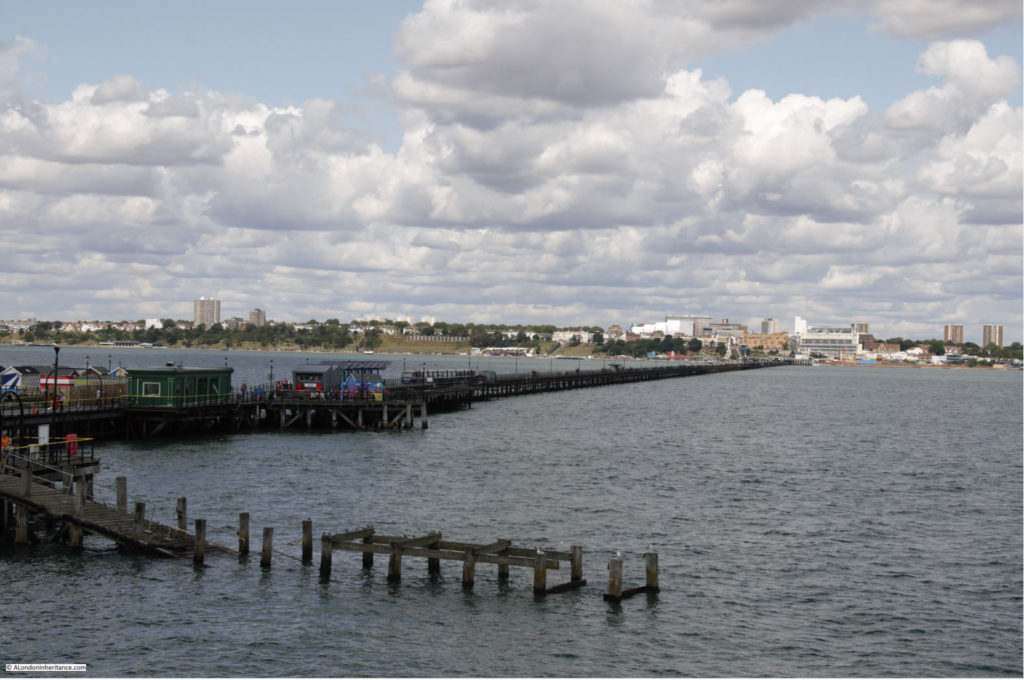
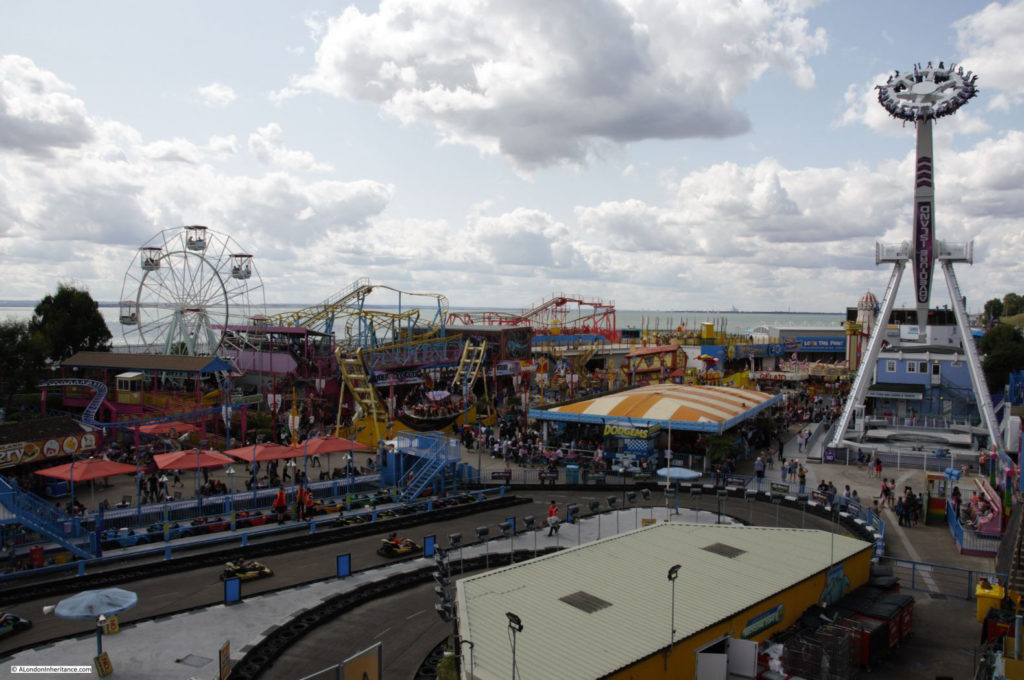
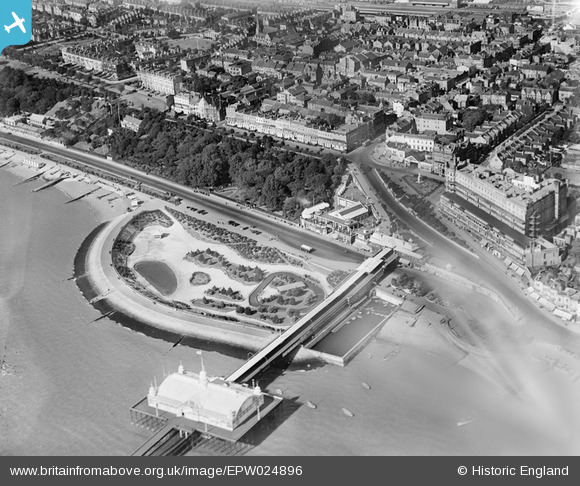


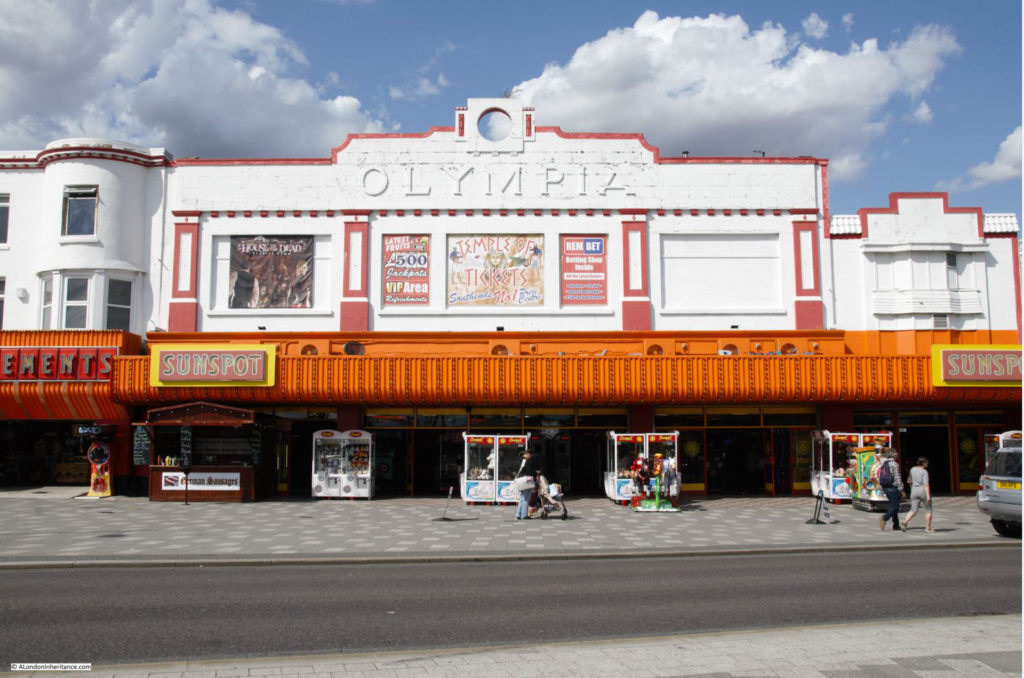

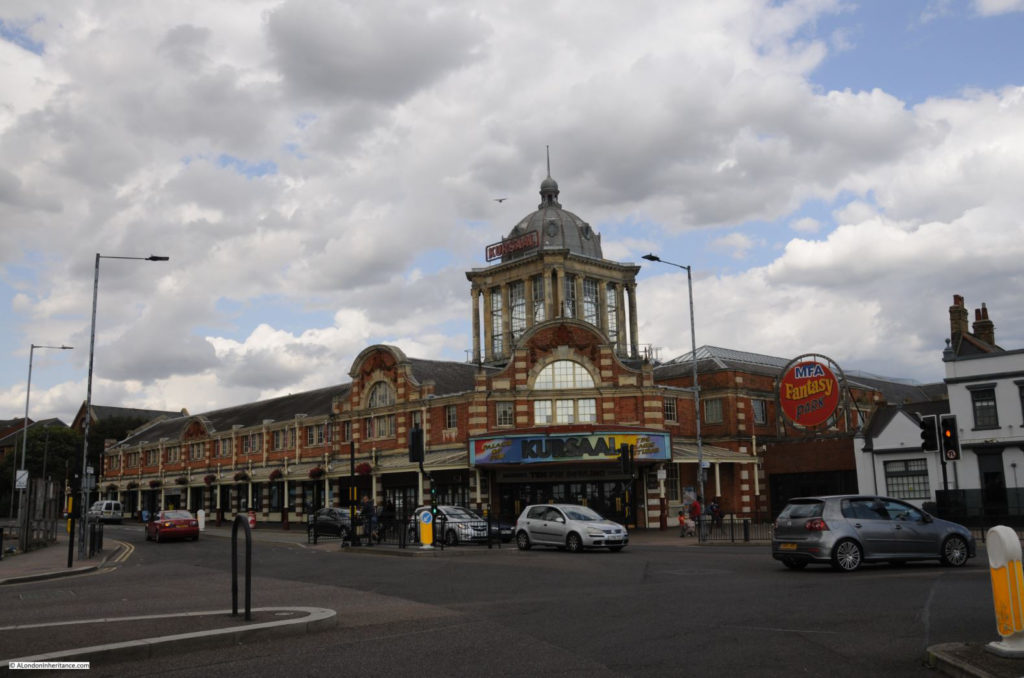
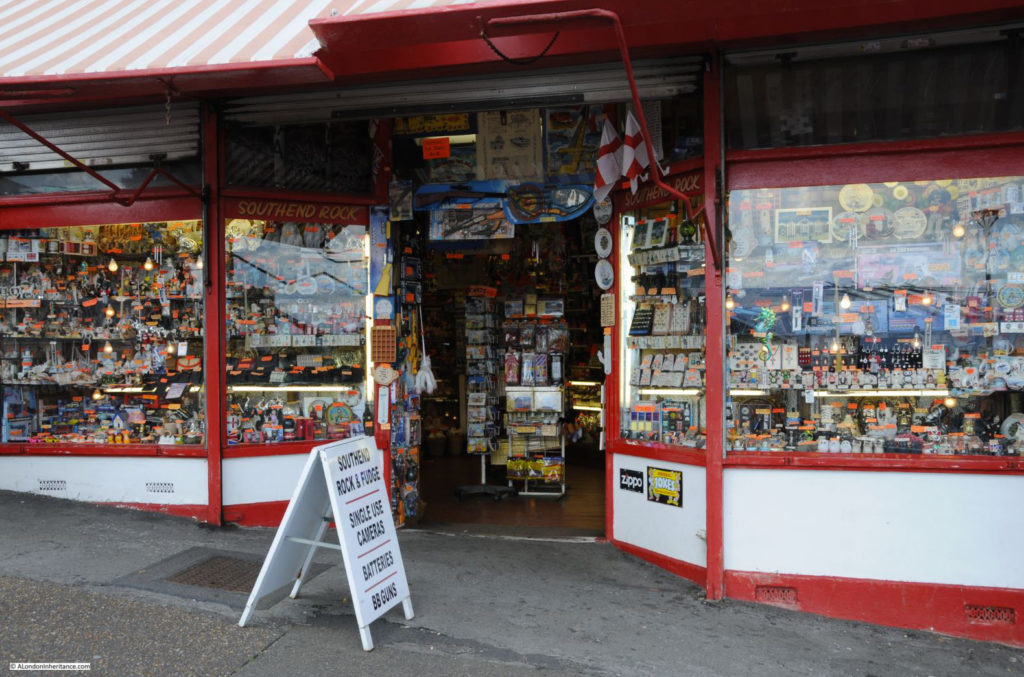

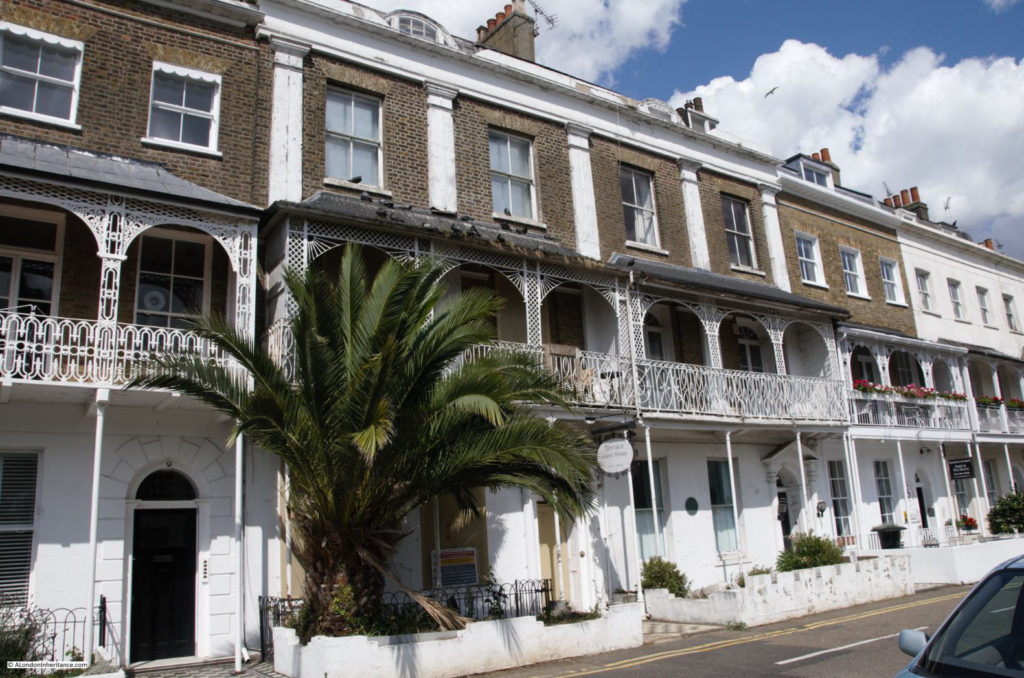
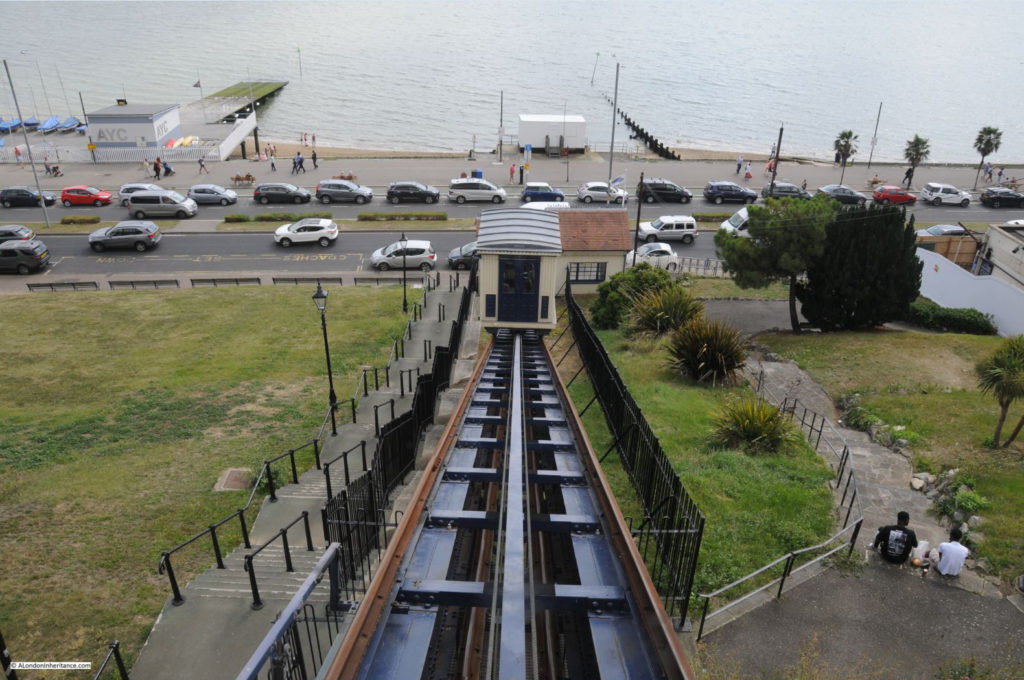
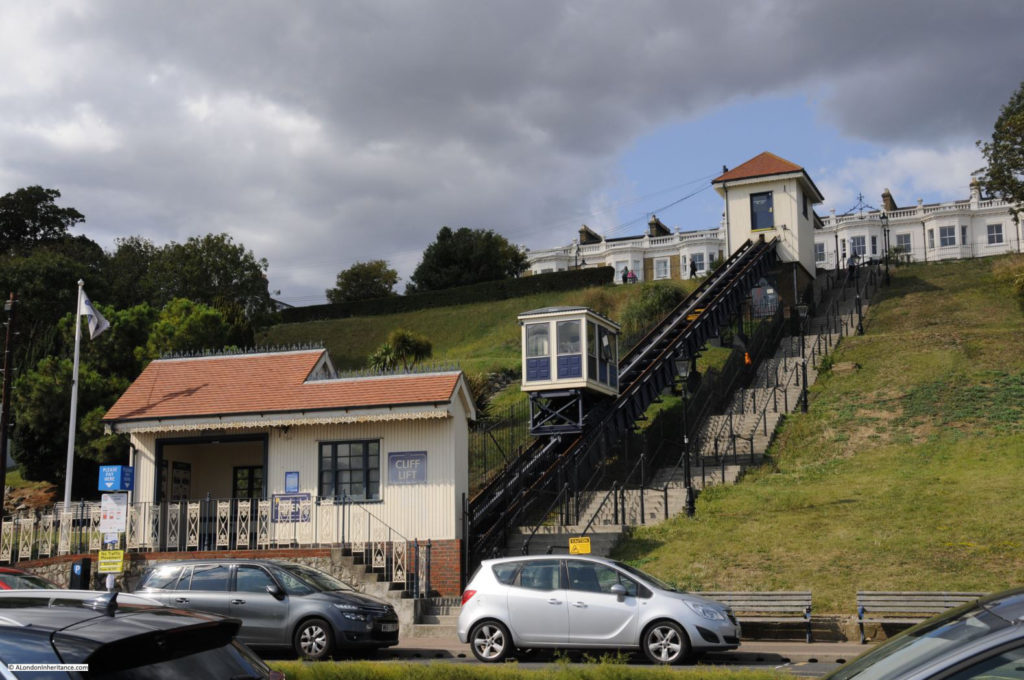
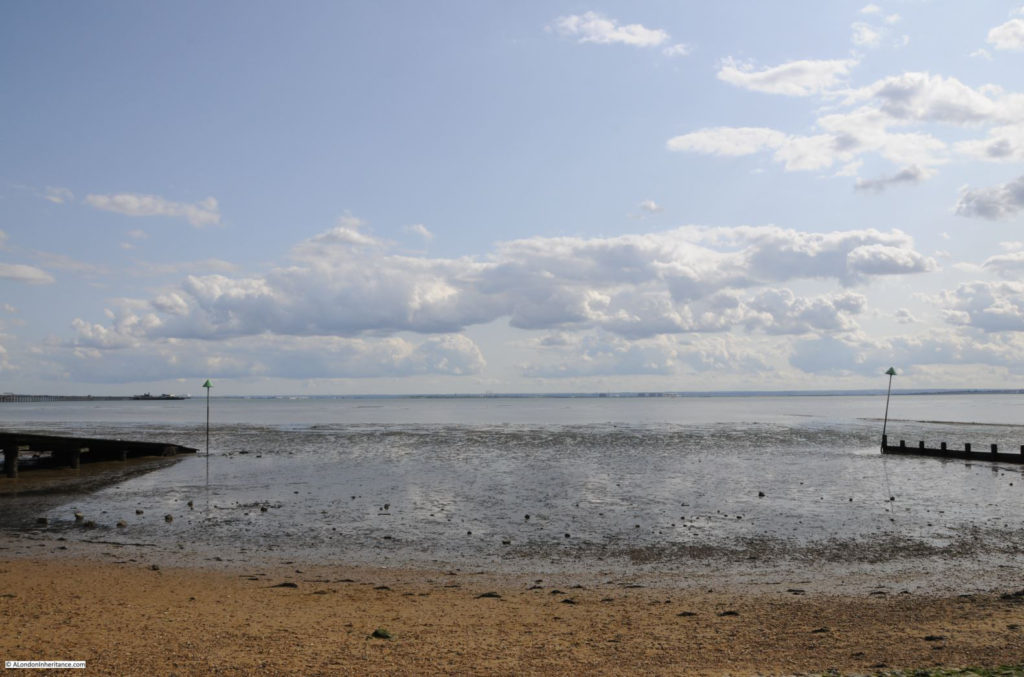
“but for me it will always be a place to get lost in the wonderful estuary sky”
Perfectly said, David..
Thanks Geraldine
What a great article referencing Southend on Sea. Founded in1928 our charity the London Taxi Driver’s Charity for Children has been taking thousands of London’s disadvantaged children to Southend in convoys of iconic Black Cabs. Southend is an easy route from London and does give the children an opportunity for the fresh air of the sea and enjoy the brilliant entertainment on offer like the Adventure Island.
Those memories live long with both the children and their families.
Another fabulous post! Was Adventure Island called Peter Pan’s Playground in the 1990s? That place was my kids’ idea of heaven. I was told that Ian Dury caught the polio that disabled him in the outdoor pool that stood to the west of the central pier area.
Yes it was Peter Pan’s Playground, with the Golden Hind ship at the entrance next to the Pier. The rides are rather more adventurous today. I believe you are right about Ian Dury.
I can imagine the utter misery and desperation of being unable to raise the small amount of money needed money to retrieve a boy’s suit from the pawn shop. I expect the boy had been looking forward to his day at Southend for weeks – probably telling his pals all about it.Then his mother had to let him down. And her husband- back from the trenches to sell papers in Leadenhall street in all kinds of weather and earning a pittance for his family. A hundred years later- and I’m celebrating your heroism, Mr and Mrs Woolf.
There should be monuments to Londoners like them- present day Londoners should know how their predecessors lived and struggled. How far come- thanks to people like Ellen Woolf.
How ungrateful and unaware we are. There should be murals, enlarged photos- WITH NAMES- showing life in the East End.
(And in Ancoats, Collyhurst , Manchester, Salford too.)
Fully agree – There are so many similar examples, and I like to highlight them in my posts, as they should not be forgotten and history is not just the well known names.
Another way to get to Southend was by bike. In the 1930s my dad was a member of a cycling club in Hackney that used to have day trips to Southend. He used to recall that he used to struggle to keep up, particularly with a couple who rode a tandem at break-neck speed. My dad was a fit young teenager who went on to win in an eight at the Henley Regatta in 1938 so they must have been going at some speed. I never asked him how much time they actually spent in Southend.
A lovely reminder of past pleasures! I remember the excitement of travelling on the tube to the station for Tower Bridge and the boat to Southend. Sometimes we walked along the pier but more often took the train and then walked through the town. We would spend some time on the beach and in the sea but the greatest pleasure and excitement was a visit to the Kursaal and the amusement arcade where my hoard of pennies went into the machines.
We often finished the day with fish and chips before the journey home.
I enjoyed the whole article and the pictures in particular. The day out to Southend was a real delight in the late 1940s.
That was a great read, and s interesting to see the pictures – thank you. My family would travel to Southend on sea in the early 1900’s from London and I remember my grandparents speaking of it too.
My heart went out to that poor woman who suicided. Bless her.
A fascinating article, yet again. These make my Sunday mornings a voyage of discovery. Thank you.
I was particularly interested in this article as my husband’s 2x great grandparents, who had been living in Ramsgate, moved to Southend. Perhaps they visited on the paddle steamer….or even moved across the estuary via the river.
I know that the family also took many day trips to Southend from East London….so this has been very interesting.
So tragic that life was so difficult for so many back then too.
Thank you.
Another great post. Thanks so much for your time. I echo Margaret Ambrose post. So sad.
What a brilliant read! Lived in East End in 50s so remember well getting the train from either Stratford to S/end Vic or Plaistow for Barking to S/end Central. With my short young legs I preferred Central as it was closer to the sea! Now live 6 miles from Southend but seldom go there now as the old style charm is not there. I prefer to have my memories!
Thanks for a lovely reminder of my past. As a child in the 50s we always had day trips to Southend and of course a walk along the pier although we sometimes were allowed the great treat of the train ride back. One day we had such a treat when we got up very early to go to the end of the pier for a day boat trip to Boulogne. I also remember my dad always got his weight checked by a kind of swinging seat machine. Plus Peter Pans playground and the crooked house where the sea level from the flood of 1953 was marked on the side of the house. We still visit once a year, such wonderful memories. Thank you.
In the late 1950’s – early 1960’s my Dad always took us to see the lights in Southend, the cockney equivalent of Blackpool it was said. We always took the train to the end of the pier and then walked back. Peter Pan’s Playground was east of the pier, along with the Golden Hind. There used to be a waxworks museum too. By the Golden Hind was a moving waxwork of the famous torture scene from “The Pit and the Pendulum” with a blade swinging back and forth above a captive figure which raised and lowered its head as the blade passed. Very scary when I was six! The Kursaal had a “Wall of Death” in those days. A motorcycle would ride horizontally around the walls of a big wooden drum, the audience watched from a gantry at the top, looking down into the drum. Very exciting! There was also a “Tip the Woman Out of Bed” sideshow where men would throw wooden balls at a target and if they hit it right the bed would tip sideways and the scantily clad woman would fall out resulting in great cheers and much ribald language from the crowds of blokes. My Mum thought it disgusting! We also used to take day trips to Southend on the Royal Sovereign from Tower pier. This was my Dad’s idea of a cruise I suppose. My Mum, who comes from Yorkshire, wasn’t much impressed with Southend. She always thought it a rather cheap and tawdry place but she liked the boat trip. I still have an occasional run down to Southend for a couple of hours in the bracing sea air – or freezing rain.
I couldn’t have put it better myself Malcolm. Great days out with mates, especially The Kursaal.
Your Mum was probably right with her opinions but that was the attraction for us Londoners.
Lovely article. As a 5 or 6 year old east end lad, I well remember the being taken with my brother on the train from Fenchurch Street to Westcliffe, with the excitement mounting as the train bordered the estuary for the last few stops.
We holidayed there regularly right up to about 1960 when we ventured abroad.
I really enjoyed this, especially as I have a photo of my mum, aged about 10 (therefore in the early 1930s), on the beach at Southend with her parents, two grandmothers and one grandfather, and two close family friends, mother and daughter. What strikes us nowadays is that the adults are all fully dressed and even the children are not in bathing suits. It must have been hot as most of the group are wearing a hat, and my nanna has a parasol in her hand. You have given me a lot more context for that photo – thanks!
What a lovely surprise to have Downunder – my hometown! My Grandfather was Manager of the Palace Hotel until 1915 so I was very interested to read the piece you posted from 1910. It was a great place to grow up in the early 1960s. I used to go to the end of the pier on the green train to watch the puppet shows. I loved the aquarium and seeing the lifeboat. I remember the railings on the top deck had tiny oblong messages attached to them, the top line said “Please do not throw” the second line said “people below” with no punctuation. Being a new reader when I discovered these, I asked my Dad why they were telling you not to throw people into the sea! My family owned Gerry’s Nosh near the Kursaal roundabout where I worked with my Mum for a few years – the home of Southend’s first hot donut machine! Many happy memories of Peter Pan’s Playground with the Crooked House, the animal train and the Jigsaw train as well as Never Never Land lit up at night. There is a lovely YouTube ‘Southend 1959’ narrated by Johnny Morris and it brings my childhood back to life. Thank you for this post. I fancy a Rossi’s 99 now!
Hello Ann,
I can’t believe this!! I just typed this into Google search “The owner of Gerry’s Nosh 1960’s Southend on sea?” and the 1st link was this one. I live in The Netherlands but was born in Southend in 1944. I belong to a fb group named The Shrubbery which was a coffee bar on Royal Terrace in the 60’s. someone placed an old ad for Gerry’s Nosh ( I wish I could attach it here!) they asked if anyone remembered it, there were lots of people that did and this was what I wrote..
Audrey Wensing-Currie We used to go there when we were on a late shift at the airport. I knew him when I was young, his name wasn’t Gerry though, I had a crush on his brother David I think it was, he went to Australia in about 1958 I think. They lived in Shaftesbury Avenue on the right near Warwick Road. Their surname is on the tip of my brain! ( I think I made that up!) I do hope someone can remember them.
Lots of the facts could be/are probably wrong! I do hope this is not just a coincidence and that you are related and can fill in the surname? was it a French sounding name? I do hope you get this mail and put all our minds to rest , hoping to hear from you soon,
Audrey.
oh my goodness, Audrey, I’ve just found this after googling for some photos of Gerry’s Nosh.
It’s hard to believe, but we didn’t take many photos of the place. My niece, John’s daughter, just texted me to say that Gerry’s Nosh is on the ‘Top of the Pops The Story of 1981’ very briefly at 6’53” you can find it on youtube. John sadly passed after a very brave fight with brain cancer in 2005. He had settled in South Fremantle, Western Australia. My brother David is in Queensland and I am in Victoria! My Mum was in New South Wales until she passed in 2004. I’m not on Facebook so can’t pop in. I’m glad you have some good memories! I have plenty and a few good laughs from working with my Mum at Gerry’s Nosh and making hamburgers with my brother when he bought the place from the original Gerry – who sold it to go and captain a corporation’s yacht in the South of France! All the best.
Gerry’s Nosh donuts! I was a regular customer! You’re right, Southend was a great place to grow up in the 60s. Obviously we were used to the people coming from London but it still felt like a place in its own right. Funnily enough I live in Australia too. I wonder how many Southend folk are there?
Hi Mike, good to hear from a regular! You kept us going during the winter months! I know of 11 Southenders who came out here – 8 from one street! I follow Southend Pier on Insta and saw that the new carriages are reverting to the green and cream that we knew in the 60s – made me smile!
Cheers!
Growing up in North London in the 1950s, Southend was the destination for our annual Sunday School Outing and we travelled there on a hired red London double decker which was part of the excitement. I remember rides on the Helter Skelter, delicious candy floss and of course the Rossi ice cream cornet.
My great grandparents and four of their children ran Bell’s Restaurant & Quick Service Bar on the front at Southend between the Wars. I’m not sure what is in the same space now, I’ve not been able to find much information.
They lived at Thundersley, Kenneth Road, in a lovely “villa”. When they bought it, it was called The Fortress, but my grandmother hated that, so renamed it “Merrylands”. Sadly it’s no longer there either.
I’ve got photos of both that I could send if you’re interested.
Wow a blast from the past. My paternal line from the East End of London (although originally way back early 1800`s from Scotland and Plymouth )
As my grandparents moved out of Wapping and Canningtown to Romford in the 1920`s and I spent the first 7 years of my life in the 1950`s in Upminster, Southend and it`s pier were frequent day trips. Loved the train ride on the pier. very exciting for a 6 year old in those days.
Ah, a sixties trip to Southend with a portable transistor radio. The pop pirate stations transmitting from boats and WWII towers in the Thames Estuary were very well received there unlike the modest signals they gave at home in London. How patient my parents were when all I wanted to do was stand on the pier and tune in to those wonderful stations for an hour or more.
What fantastic timing! — Very interested to read this week’s post as only a few days ago I was looking at a photo of my great grandparents sitting on the beach at Southend taken in 1914. My great grandfather is in uniform (a farrier sergeant in the Army), and behind them is a building with a large sign saying ‘Lockharts’ – which was a restaurant where my great grandmother worked (as a waitress, I think) at the time. I did a quick search on-line, but I sadly couldn’t find any info about Lockharts. Would be nice to find out where it was and see if I can recreate that photo today.
I visited Southend briefly late last year when on the PS Waverley, which put in at the pier whilst en route to visit the Maunsell Forts; we must have looked very similar to the old photo you’ve included above (I’ve written about this day out on my own blog). The last time I properly visited Southend must have been back in the early 1980s, when I was a child. I have vague memories of the pier and the funicular lift by Royal Terrace … As I live on the Fenchurch Street C2C line I keep telling myself I should have a day out at Southend, so I think the photo of my great grandparents and your post might be just the prompt for me to do so soon!
It is largely forgotten that, on summer weekends and Bank Holidays, there were additional through trains (via Barking) from St Pancras, and as far out as St Albans. I remember taking these from Upper Holloway, from our house at Archway.
This stopped when the Fenchurch Street – Southend line was electrified (c.1960), after which a change at Barking was needed. This dampened demand, as these through trains were usually full and standing before Barking; I wonder if the subsequent loss of most of this traffic was a self-inflicted cause of the line being on Dr Beeching’s hit list just a few years later. Thankfully, it remains in use, now itself electrified.
Good Old Southend, not forgotten!
Hit the spot for a lot of people with this post.
I grew up in Rochford, some 3 or 4 miles to the north, and my parents, although not well off, always had a car even though they couldn’t afford for us to go in anywhere when we got there. A summer evening’s “blow” along the sea front, gawping from my back seat at what Dad called the Mopper’s Mile (because every building that wasn’t an arcade, ice-cream shop or chipper was – and indeed, still is – a pub) and the spectacular lights, (some of them animated which was pretty go-ahead back then) was a huge treat and now and then, when we got lucky, a Rossi’s ice cream might miraculously happen! Even more rarely, they would venture a dip right up the far Eastern end by the Shore House pub (which once famously lost the first letter from its then red neon sign…) where the road turns inland to Shoebury. I sadly never managed, then or now, to learn how to swim.
I only once got to see inside the enticing-looking “Never-Never Land”, with its colourful statues and tableaux, on the cliffs just west of the Pier. It was just before it closed, when my own children were small, and it looked terribly sad and rundown by then, not at all worth the sixpences it would have cost my parents to get us in, and for which I had once yearned in vain…
Peter Pan’s playground was free to walk round and look at the rides, and I still shudder at the mark on the Crooked House, seeing it several feet above my head even now and remembering my dad’s eye-witness story of the floods in 1953. I was terrified on those green and cream Pier trains because the Pier boarding looked so terribly flimsy, and I was old enough to have learned the words “Emergency Exit” elsewhere and notice there weren’t any in these cars. I still retain a dread of drowning in a box and have to make myself go below if I take a trip on a ferry or boat.
Apparently some of the old sky-blue and cream Corporation buses now ply, wearing a fraudulent coat of London Transport red on the outside, in Niagara in Canada – it was on a Facebook post the other day. The old 7 and 8 routes still run under Arriva and you can travel on them right along Eastern Esplanade, although no longer on the old open-top vehicles which used to be needed to safely (provided you remained seated!) get under the then Pier approach bridge. That’s been replaced after one too many “stranger” vehicle drivers jammed themselves under it, the new clearance is more than adequate although the glass bridge is sadly prone to being vandalised.
Up the Kursaal end, the whole block opposite, including the unforgettably sleazy Foresters’ Arms, has just been demolished for development. The Kursaal itself was recently and unexpectedly vacated by the bowling company and as far as I know remains vulnerably vacant: the Esplanade pub at the Pier end is now being finally taken down after a series of Mysterious Fires – something which tends to happen to old Southend landmarks when the planning application is denied.
Sorry I’m boring on, but I thought a few of you might like updates on the old place.